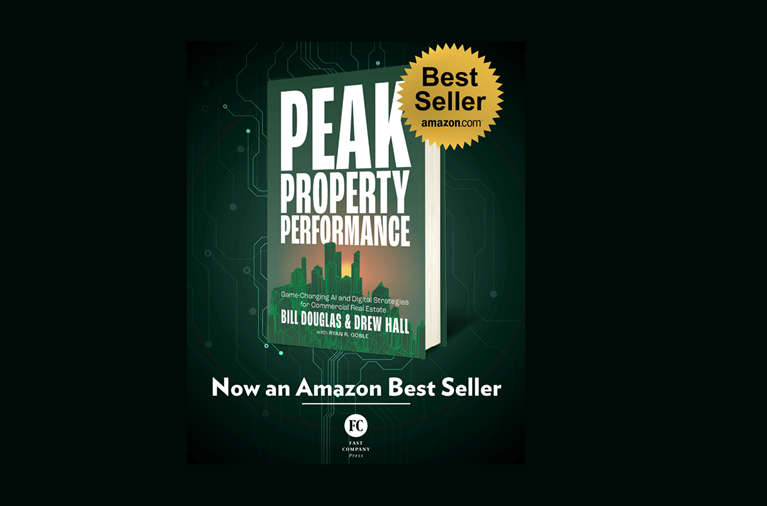Week 28: From Units to NOI – How to value tech like a revenue asset
In this weekly series, we explore how the commercial real estate industry is being transformed by data and digital infrastructure. Guided by the principles in Peak Property Performance, we unpack a new idea every week to help owners unlock value, reduce risk, and future-proof their portfolios. Learn more about OpticWise and Bill Douglas, the authors of this series.
In the commercial real estate world, tech investments are often treated like expenses. Fibre cabling? That’s $X (£X) per foot. Access control? $Y (£Y) per door. Tenant Wi-Fi? Another monthly line item. But this “unit cost” mindset is a relic of the past.
Forward-thinking owners are reframing tech—not as a sunk cost, but as a revenue-generating asset. When digital infrastructure is deployed strategically, it becomes a source of NOI and an asset value driver, not just an operating expense. It’s time to start valuing it accordingly.
The Unit-Cost Trap
Owners and asset managers are used to looking at tech through the lens of:
- Dollars (Pounds) per square foot
- Dollars (Pounds) per user
- Total project CapEx
This framing encourages cost-cutting over value creation. It treats tech as a fixed expense that needs to be minimized, rather than a lever for long-term performance. This leads to underinvestment, fragmented systems, and missed revenue opportunities.
What Changes When You Think in NOI
Let’s take a few examples:
- Managed Connectivity
Instead of giving away the network to ISPs, ownership monetizes it. With a building-wide digital utility in place, tenant internet becomes a recurring revenue line—often with 40–70% margin. - Smart Access & Controls
Instead of installing standalone systems, the owner deploys integrated access, lighting, and HVAC that reduce operating costs and improve ESG scores—boosting NOI through both savings and valuation multiples. - DDI as a Leasing Feature
Buildings with unified data & digital infrastructure enable enhanced tenant experience platforms, faster onboarding, and hybrid-ready amenities. That supports higher rents, faster lease-up, and longer retention.
Each of these moves converts technology from a “unit” to an “asset.” It directly improves NOI and indirectly improves exit cap rates.
It’s Time to Update the Pro Forma
If your underwriting still puts “Tech Infrastructure” in the expense column and leaves it there, you’re leaving value on the table.
Here’s how to rethink it:
|
Investment |
Traditional View |
Digital-First View |
|
Fiber / Network Backbone |
Infrastructure expense |
Platform for managed services + NOI |
|
Access Control System |
CapEx line item |
OpEx reduction + compliance automation |
|
Sensor Ecosystem |
Maintenance add-on |
Source of real-time ESG & risk data |
|
Tenant Experience App |
Soft cost |
Revenue channel + retention tool |
How to Reframe Tech With Your Team
- Start With Outcomes
Don’t ask “how much per foot?”—ask “what’s the NOI or savings potential?” - Run Backwards From NOI
For every system, ask: Could this reduce OpEx? Could this be monetized? Could it improve retention or leasing velocity? - Build the Case With the PPP Review
Use the PPP Digital Infrastructure Review to pinpoint where your building’s tech stack is creating—or capping—value.
Tech Is Not Just a Tool—It’s a Business Model
Digital-first owners aren’t just installing systems. They’re building digital business infrastructures that expand margin, enhance valuation, and create operational leverage. When you stop pricing tech by the square foot or by the door and start modeling it by the dollar (pound) of NOI, you change the game.
Read all about it in Peak Property Performance.
Andrew Stanton CEO Proptech-PR
Andrew Stanton Founder & Editor of 'PROPTECH-X' where his insights, connections, analysis and commentary on proptech and real estate are based on writing 1.3M words annually. Plus meeting 1,000 Proptech founders, critiquing 400 decks and having had 130 clients as CEO of 'PROPTECH-PR', a consultancy for Proptech founders seeking growth and exit strategies. He also acts as an advisory for major global real estate companies on sales, acquisitions, market positioning & operations. With 200K followers & readers, he is the 'Proptech Realestate Influencer.'















